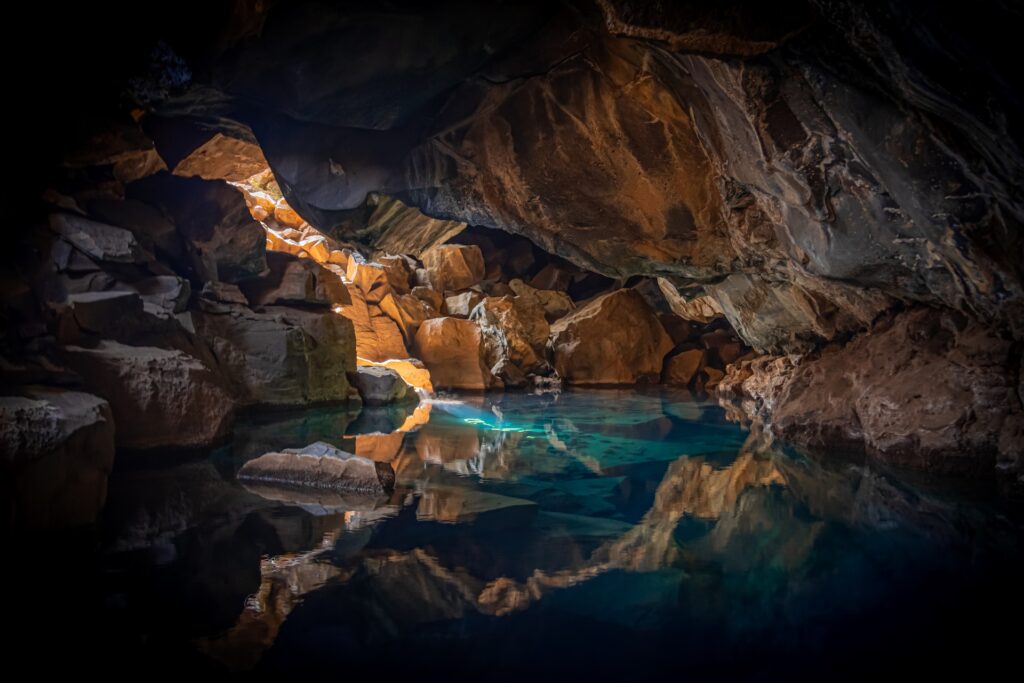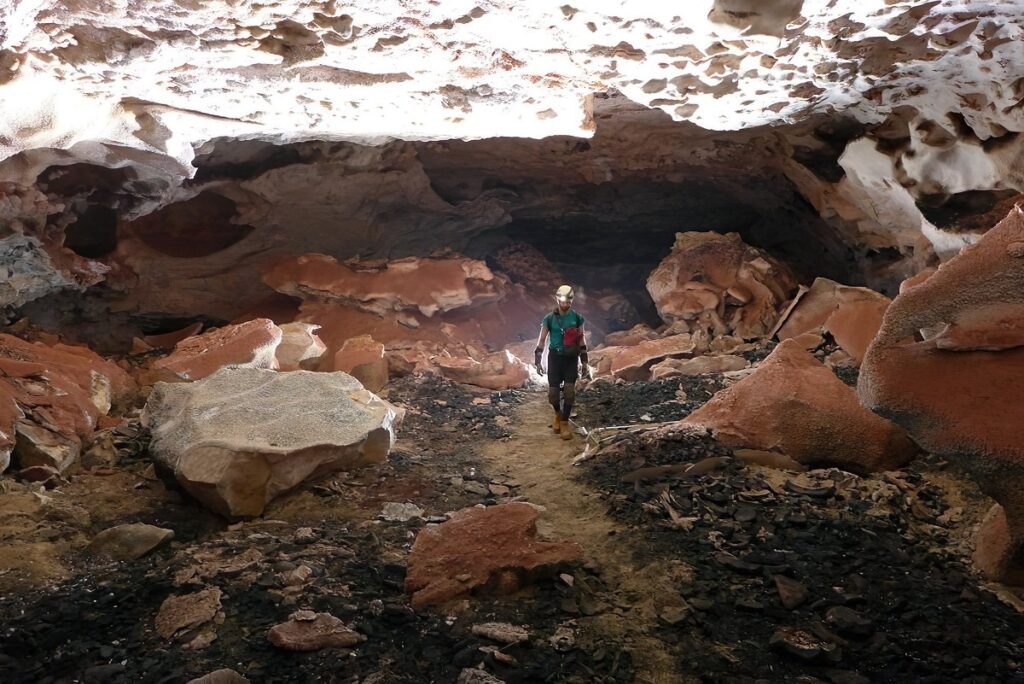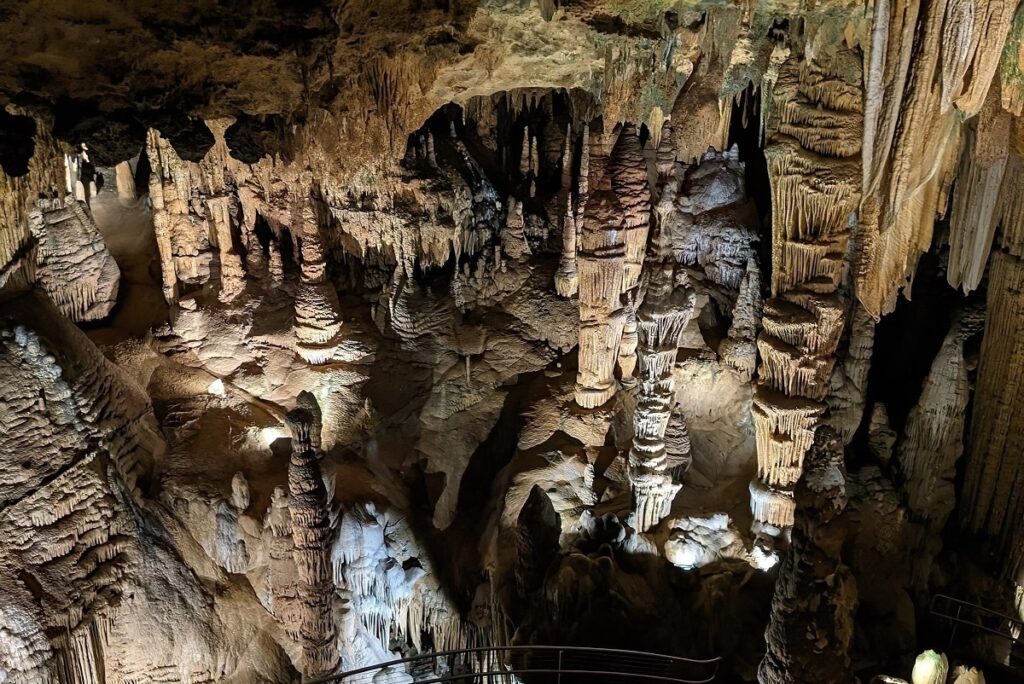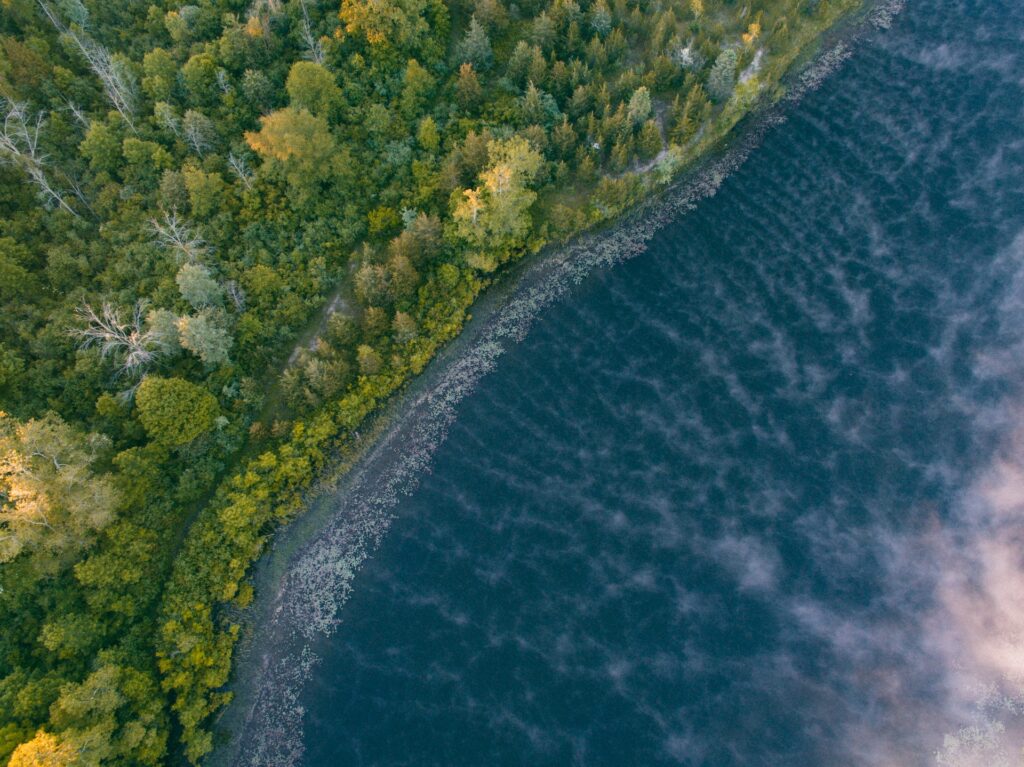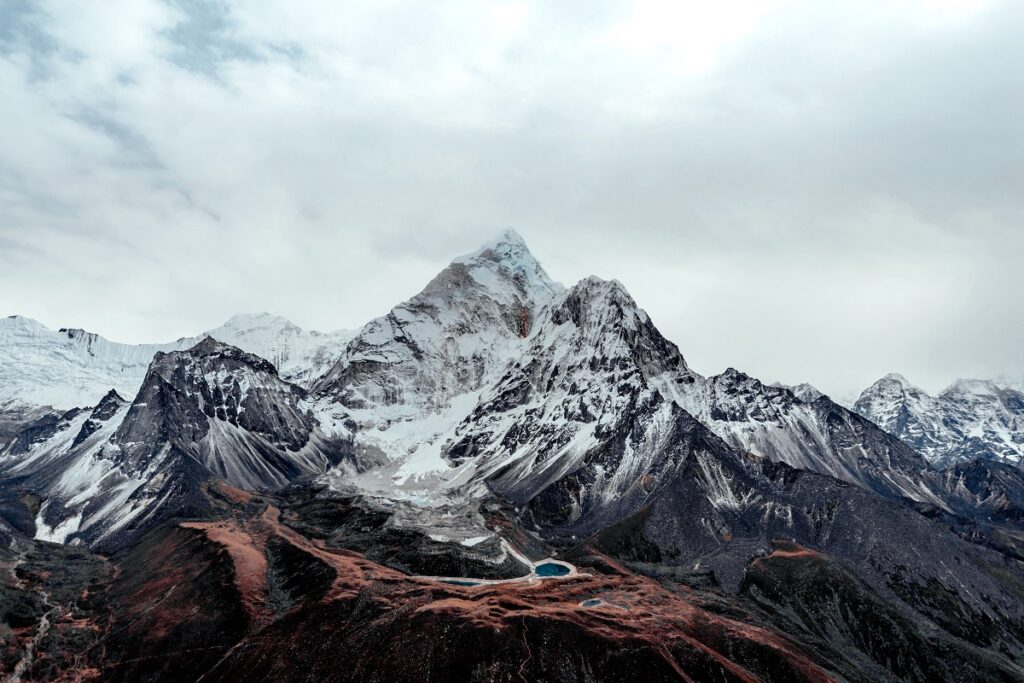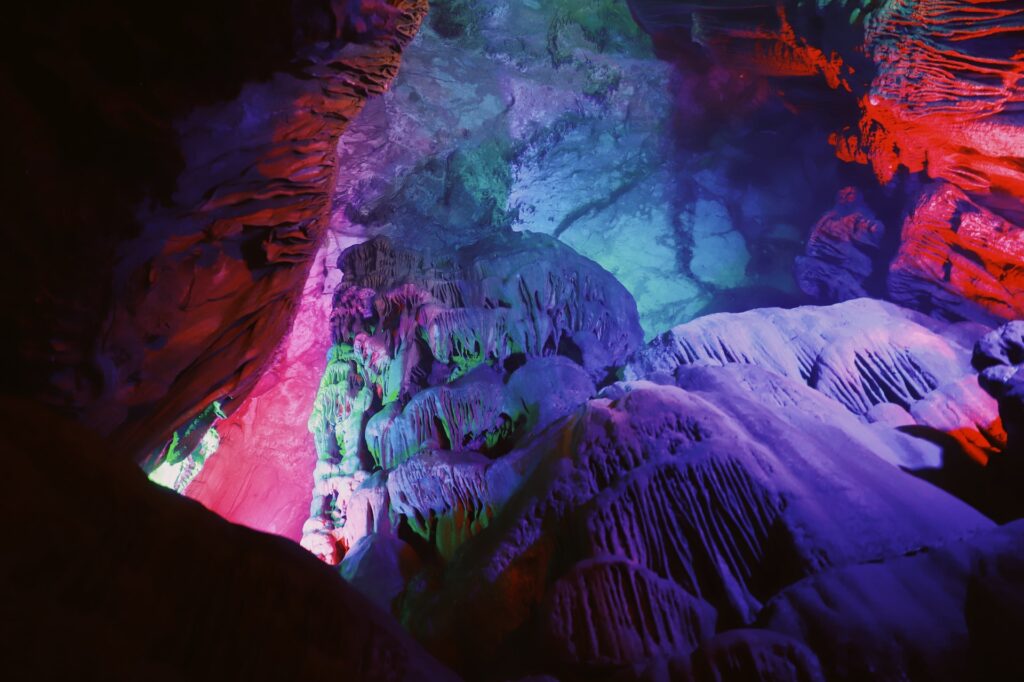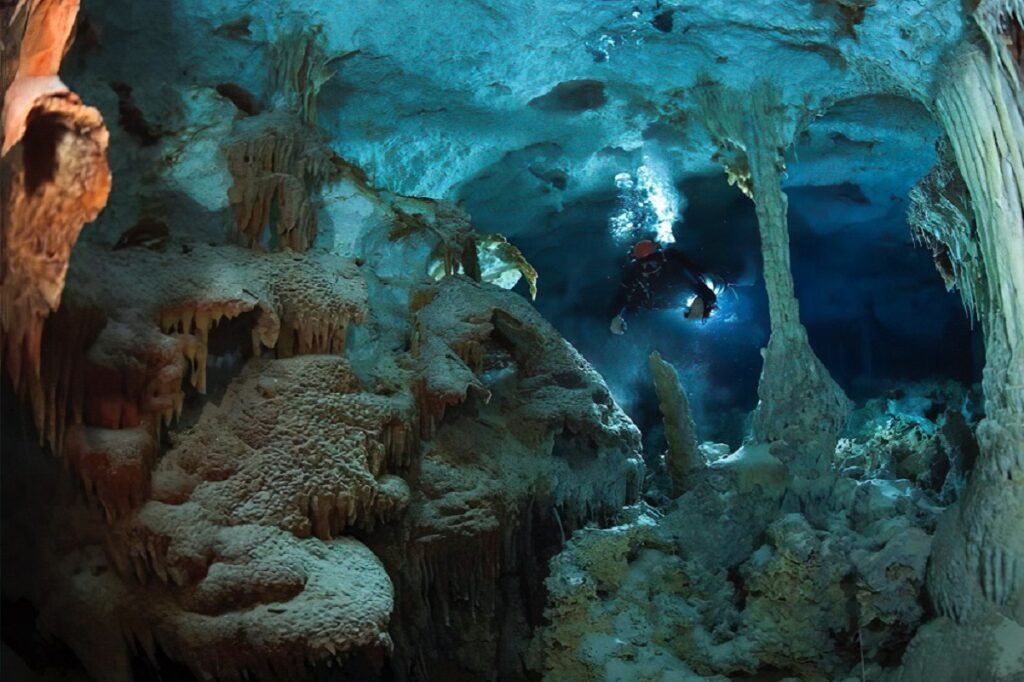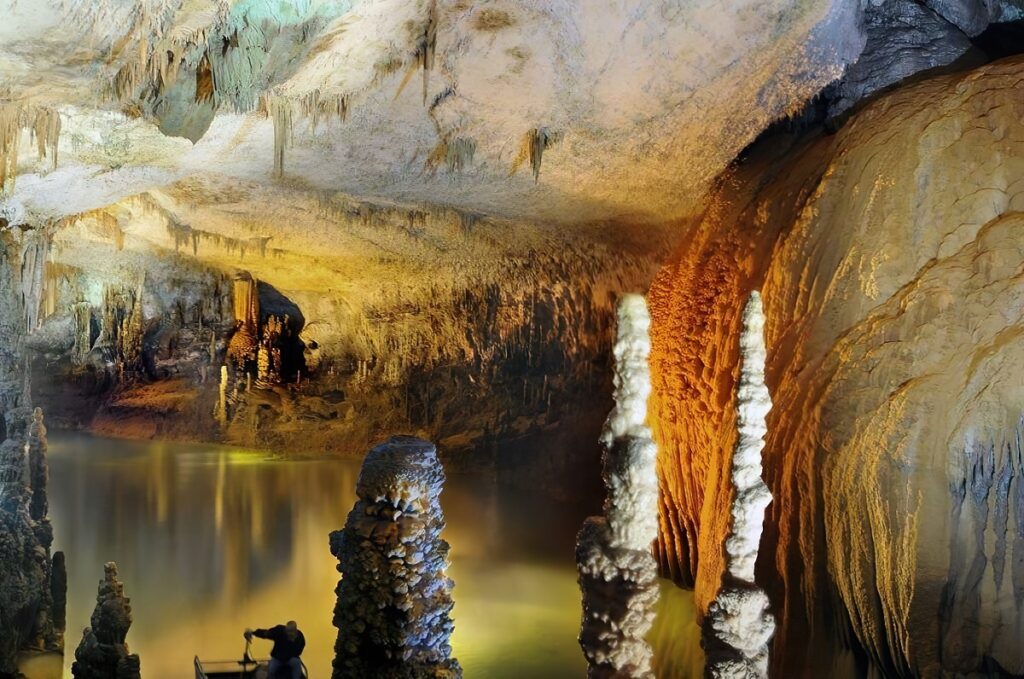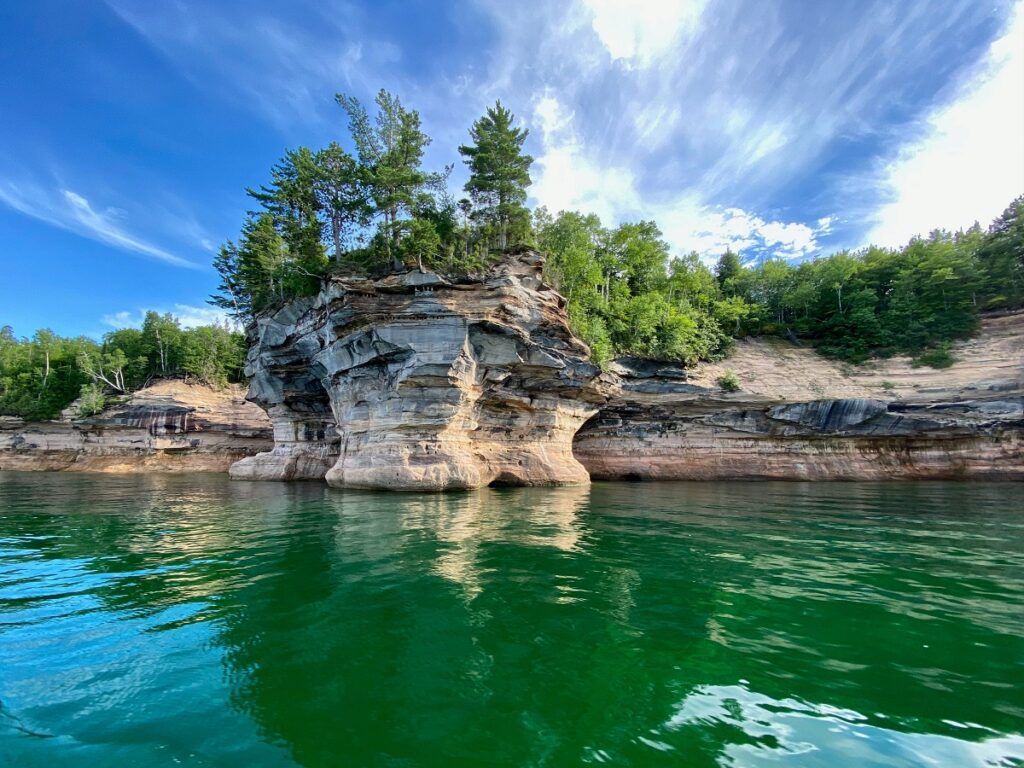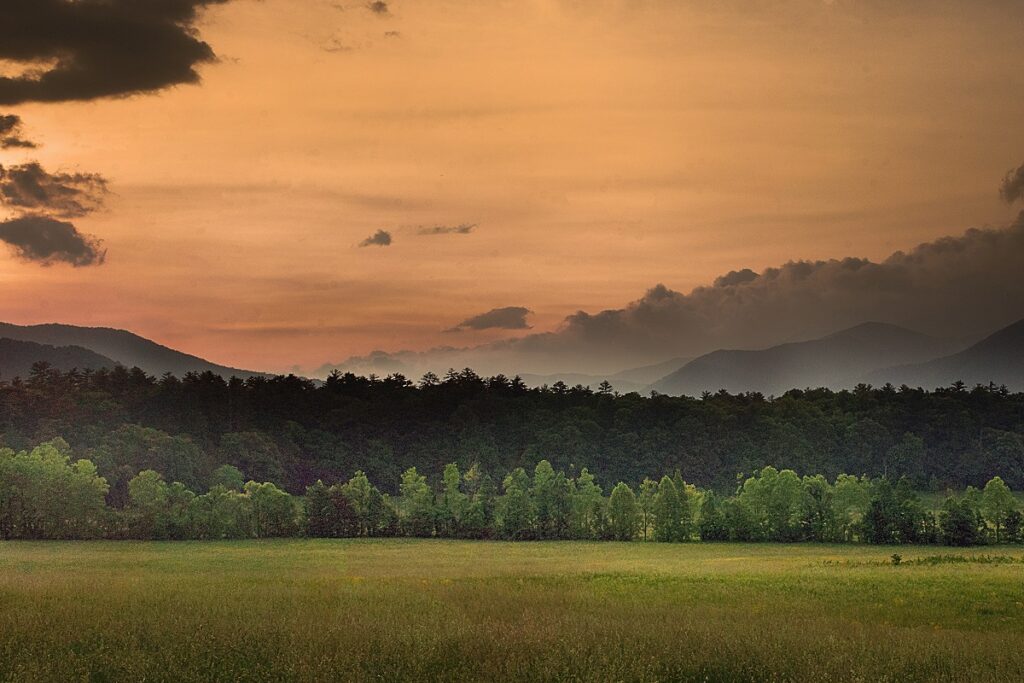Top 10 Countries with the Most Caves
Top 10 Countries with the Most Caves
WhiteClouds builds 3D Raised Relief Maps
Did you know we make
3D raised-relief maps
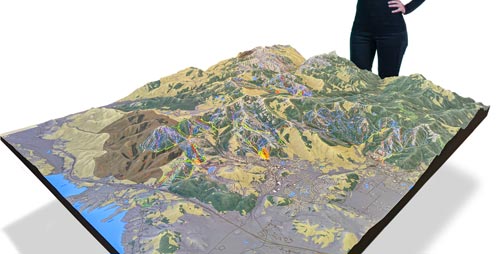
and
3D raised-relief maps
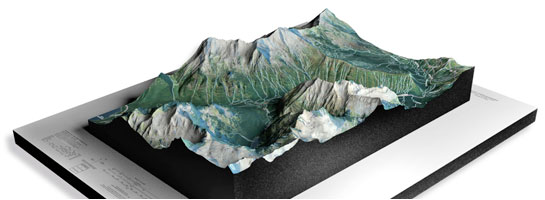
For the adventurers at heart, nothing quite matches the allure of exploring the hidden realms beneath our feet. Enter the intriguing world of caves, each holding its secrets from epochs past. Here, we’ll embark on a global journey through the top 10 countries blessed with the most caves, unveiling a world of mystery and splendor lying just beneath the surface.
#1: United States Caves (45,000)
Stretching from sea to shining sea, the United States harbors an estimated 45,000+ caves, the product of millions of years of geology at work. The country’s varying terrains — limestone-rich regions, rugged mountains, and desert areas — offer a diverse array of caves. Each cave carries its own unique story, from those once inhabited by ancient civilizations and acting as vital resources to being inspiring geological sanctuaries. Amongst this plethora of cavernous wonders, three uniquely distinctive ones stand out:
Carlsbad Caverns, New Mexico: What makes this cave unique is its sheer size and the mesmerizing spectacle of over 400,000 Mexican free-tailed bats that reside here. At dusk, they surge from the cave’s mouth in a swirling, awe-inspiring exodus, a sight that has drawn spectators from around the globe. A limestone cave, Carlsbad Caverns boasts an impressive array of speleothems, including stalactites, stalagmites, and draperies that drape its vast chambers, a testament to nature’s artistic prowess.
Mammoth Cave, Kentucky: This is the world’s longest known cave system, with more than 400 miles explored. But what truly sets it apart is its rich human history. Evidence of mining by prehistoric peoples, exploration records from the 19th century, and remnants of a tuberculosis hospital make this cave a fascinating journey through time. Also unique to Mammoth Cave is the presence of eyeless cave shrimp, a species completely adapted to life in the dark.
Lechuguilla Cave, New Mexico: This cave’s uniqueness lies in its pristine condition and spectacular formations. Deep beneath the earth, it remained untouched and unknown until 1986, making it one of the world’s most pristine caves. The cave’s gypsum and lemon-yellow sulfur deposits create an alien-like landscape. Microbiologists also treasure Lechuguilla for its unique bacteria, some of which demonstrate resistance to antibiotics.
#2: Ukraine Caves (4,000)
Ukraine’s diverse landscapes, ranging from the Carpathian Mountains to the Crimean Peninsula, provide the perfect backdrop for some of the most awe-inspiring cave systems on Earth. These natural underground labyrinths, carved out over millennia, are treasure troves of fascinating geological formations, unique ecosystems, and tantalizing archaeological finds. From among Ukraine’s stunning array of cavernous treasures, three particularly unique ones demand our attention:
Optymistychna Cave, Ternopil Oblast: The jewel in Ukraine’s subterranean crown, Optymistychna Cave is the world’s longest gypsum cave, extending over 230 kilometers. Its uniqueness stems from its labyrinthine complexity, coupled with stunning mineral formations that adorn its corridors. Particularly captivating is the Garden of Eden, a section densely packed with otherworldly helictites, a type of speleothem that defies gravity with its erratic growth patterns.
Atlantis Cave, Podilski Tovtry National Nature Park: A remarkable underwater marvel, Atlantis Cave’s uniqueness lies in its captivating underwater galleries and channels. For intrepid cave divers, it offers an unparalleled exploration experience, revealing an enchanting world of submerged stalactites and stalagmites.
Verteba Cave, Borshchiv Raion: What sets Verteba Cave apart is not just its natural beauty but its profound historical significance. Used as a hideout during the persecution of the Ukrainian Greek Catholic Church in the 18th century, this cave also served as a dwelling place during the Stone and Bronze Ages. Archeological excavations have unearthed a plethora of artifacts from these periods, making Verteba a tangible link to Ukraine’s ancient past.
#3: Australia Caves (4,000)
Australia’s vast expanse, encompassing rugged mountain ranges, dry deserts, and lush rainforests, is riddled with numerous caves, each with its unique character, history, and geological displays. From among the many remarkable caverns that dot the continent, three stand out for their exceptional uniqueness:
Naracoorte Caves, South Australia: Declared a UNESCO World Heritage Site, the Naracoorte Caves are known for their role as a treasure trove of fossilized remains. The caves house one of the world’s most substantial collections of Pleistocene fossils, providing an unrivaled glimpse into the ancient megafauna that once roamed Australia. From marsupial lions to giant kangaroos, the relics found within these caves tell a tale of Australia’s prehistoric past that is both thrilling and educational.
Jenolan Caves, New South Wales: Believed to be among the world’s oldest cave systems, the Jenolan Caves boast an impressive variety of calcite formations and underground rivers. The caves’ dazzling display of stalactites and stalagmites, particularly within the Lucas Cave and its famous ‘Broken Column’, has awed visitors for centuries. The caves’ incredible biodiversity, housing unique species like the Jenolan Caves Crayfish, adds another layer to their uniqueness.
Capricorn Caves, Queensland: The Capricorn Caves offer a unique experience, distinctively being a tropical cave system situated near the Tropic of Capricorn. This cathedral-like cavern, naturally illuminated by a skylight, creates an ethereal atmosphere that has made it a popular destination for underground weddings! Furthermore, its Summer Solstice spectacle, where sunlight perfectly aligns to illuminate the cave’s depth, is a natural phenomenon that simply can’t be missed.
#4: Mexico Caves (2,500)
Mexico’s diverse landscape, spanning soaring mountains, dense jungles, and expansive deserts, hides within its belly an array of captivating caves, each showcasing unique geological formations and compelling narratives. From the submerged worlds of Quintana Roo to the deep caverns of Oaxaca, Mexico’s underworld is a treasure trove waiting to be discovered. Among the myriad of captivating subterranean spaces in Mexico, three stand out as exceptionally unique:
Cenote Dos Ojos, Quintana Roo: Not all caves in Mexico are tucked away within mountains or beneath dry earth; some are hidden beneath the sparkling turquoise waters of the Caribbean Sea. Cenote Dos Ojos is one such marvel—a flooded cave system that offers an unparalleled diving experience. Its name, translating to “Two Eyes,” refers to two neighboring cenotes connected by a large underwater passage. The crystal-clear waters offer exceptional visibility, making this cenote a thrilling, unique, and otherworldly dive site.
Grutas de Cacahuamilpa, Guerrero: One of the largest cave systems in the world, Grutas de Cacahuamilpa, boasts 90 massive caverns. The cave’s immense size and the staggering variety of rock formations, stalactites, and stalagmites create a subterranean cathedral that leaves visitors in awe. The caves are also known for their acoustic properties, often hosting concerts and musical performances, a distinctive characteristic that sets it apart.
Sótano de las Golondrinas, San Luis Potosí: The “Basement of Swallows” is not merely a cave—it’s a pit cave, one of the largest of its kind. Its uniqueness lies in its depth, plunging a dizzying 1,200 feet into the Earth. But what truly sets this cave apart is the spectacle that occurs each morning and evening when thousands of swifts and green parakeets spiral out of the cave’s mouth, creating an unforgettable, living tornado against the backdrop of dawn or dusk.
#5: Brazil Caves (2,500)
Enveloped in the heart of Brazil’s lush rainforests, tucked away amidst its towering cliffs, and concealed beneath the sparkling waters of its rivers, a plethora of caves await the intrepid explorer. These subterranean marvels, with their stunning geological formations and intricate labyrinths, provide an insight into the country’s geological history and harbor unique ecosystems. Out of the numerous caves in Brazil, three stand out for their exceptional uniqueness:
Gruta da Torrinha, Bahia: What sets Gruta da Torrinha apart is its stunning array of rare formations. This cave boasts needle-thin speleothems called helictites, which defy gravity by growing in all directions, creating intricate patterns that captivate visitors. This cave also houses the rare aragonite flowers, delicate and beautiful crystal formations, and the “second sky,” a pool of mirror-like water that perfectly reflects the cave roof.
Gruta do Lago Azul, Mato Grosso do Sul: The “Blue Lake Cave” is indeed a marvel of nature, famous for its startlingly clear azure water. Each year, when the sun reaches the right angle, it illuminates the pool, setting it aglow in a surreal, intense blue light. This natural phenomenon combined with the striking stalactites and stalagmites makes this cave an incredibly unique spectacle.
Caverna Santana, São Paulo: The Santana cave is unique due to its accessibility and variety of rock formations. With walkways and lighting, it’s one of the few caves where visitors can safely explore the incredible beauty of the subterranean world. The cave’s distinctiveness lies in its variety – stalactites, stalagmites, columns, draperies, and flowstones all coexist here, offering an unrivaled showcase of cave formations.
#6: France Caves (1,412)
Nestled amidst the country’s verdant landscapes, France’s caves offer thrilling adventure and exploration opportunities, revealing their enchanting underworld to those daring enough to venture beneath the surface. They are cryptic storytellers, whispering tales of yesteryears and displaying the breathtaking artistry of nature. Among France’s numerous caverns, these three stand out for their remarkable uniqueness:
Lascaux Cave, Montignac: An extraordinary feat of prehistoric artistry, the Lascaux Cave, also known as the “Sistine Chapel of Prehistory,” boasts over 600 paintings that date back to the Paleolithic era. Discovered in 1940 by four teenagers, this cave’s paintings mainly represent large animals, offering an invaluable insight into our ancestors’ lives and the fauna of their era. Its authentic richness and historical significance make it truly unique.
Grotte de Clamouse, Herault: Celebrated for its extraordinary variety and density of crystalline formations, Grotte de Clamouse is a gem in the truest sense. The stalactites, stalagmites, flowstones, and draperies adorning this cave display a remarkable diversity of shapes and colors. The highlight of the cave is the rare eccentrics or helictites, which grow in all directions, defying gravity.
Gouffre de Padirac, Lot: This awe-inspiring chasm plunges 103 meters deep into the earth, leading to a network of subterranean rivers and galleries. Here, the adventurous can journey by boat along the eerie, silent underground river, illuminated by glimmers of artificial lighting, to discover the “Grande Pendeloque,” a giant 60-meter high stalactite. The underground boat ride, a unique feature of this cave, sets it apart from others.
#7: Vietnam Caves (300)
Vietnam, a country rich in natural beauty, offers an entirely different world beneath the surface: an underground realm of massive caverns, intricate cave systems, and fascinating geological features. Each cave possesses its own unique character and story, silently narrating the tale of the Earth’s evolution over millions of years. Below, we delve into three of the most unique caves in Vietnam, each uniquely spectacular and awe-inspiring in their own right.
Son Doong Cave, Quang Binh Province: Nestled in the heart of the Phong Nha-Ke Bang National Park, Son Doong is not just unique to Vietnam—it’s a global marvel. Holding the title as the world’s largest cave, it boasts a colossal size capable of housing a 40-story skyscraper within its cavernous expanse. Discovered only in 2009, Son Doong features its own jungle, climate, and an underground river, marking it as a separate world within our world.
Hang En Cave, Quang Binh Province: Serving as a majestic gateway to Son Doong, Hang En Cave is the third-largest cave in the world. Its name translates to ‘Swallow Cave’ and for a good reason—it’s a favorite roosting spot for thousands of swifts. But what makes Hang En truly unique is its beautiful beach inside the cave, surrounded by forest outside and overhanging stalactites inside. An overnight stay in Hang En offers a once-in-a-lifetime experience of camping inside a cave under a starry sky.
Huong Tich Cave, Hanoi: A destination of religious and geological significance, Huong Tich is an integral part of the famous Perfume Pagoda complex. The cave’s name translates to ‘Mountain of Fragrance’ due to the sweet-smelling floral scent lingering in the cave. It is adorned with several stalactites and stalagmites bearing unique names and shapes, including a giant stalagmite worshipped as a deity. The spiritual connection and cultural importance of Huong Tich make it stand apart from the rest.
#8: China Caves (Estimated in the Thousands)
China’s vast and diverse landscape hides numerous subterranean wonders, where nature’s artistry is manifested in the form of spectacular caves. From sprawling underground networks adorned with unique rock formations to repositories of ancient human history, each of China’s caves adds a layer of mystery and fascination to the country’s geographical narrative. We highlight three of the most unique caves in China, each offering its own captivating allure.
Reed Flute Cave, Guilin: An astounding showcase of nature’s handiwork, the Reed Flute Cave is named after the verdant reeds growing outside it, which are often used to make flutes. Discovered over a thousand years ago, this water-eroded cave is a kaleidoscope of colors. Illuminated by multicolored lights, the stalactites, stalagmites, and rock formations inside the cave present a surreal spectacle. The cave’s walls also boast over 70 inscriptions from the Tang Dynasty (716-907 AD), adding historical richness to its natural beauty.
Zhoukoudian Peking Man Site, near Beijing: This is no ordinary cave but a site of significant anthropological interest. It was here that the first specimen of Homo Erectus Pekinensis, commonly known as Peking Man, was discovered in the 1920s. This cave offers a glimpse into our prehistoric past, providing tangible evidence of early human life, and houses the largest known collection of fossils and relics of Peking Man, dating back nearly 500,000 years.
Benxi Water Cave, Liaoning Province: Unlike most caves, which are primarily explored by foot, the Benxi Water Cave offers a unique and enchanting experience with its underground river. Spanning a length of 5 kilometers, visitors can traverse over two-thirds of this subterranean marvel on a boat, gliding through waters that reflect the glittering stalactites overhead. The boat journey, coupled with an astonishing variety of karst formations, makes this cave a fascinating realm of exploration.
#9: Russia Caves (Estimated in the Thousands)
In the vast stretches of Russia’s massive landscape lies a hidden world beneath the surface, a world of breathtaking subterranean realms that capture the imaginations of adventurers and geologists alike. Home to a diverse array of caves, Russia’s underbelly offers a stunning display of geological artwork, each cave reflecting its distinct character and narrative. Below, we delve into the depths of three of Russia’s most unique caves, each offering a different adventure in the shadowy underworld.
Orda Cave, Perm Region: An exceptional marvel in the Ural Mountains, Orda Cave is the world’s largest underwater gypsum cave. This labyrinth of crystal-clear passages spans over five kilometers and reaches a depth of 60 meters, offering experienced divers an ethereal experience unlike any other. The unique gypsum composition of Orda Cave contributes to its pristine water clarity, revealing a ghostly spectacle of white, needle-like formations and gigantic caverns—an underwater realm of unparalleled beauty.
Kungur Ice Cave, Perm Krai: A popular tourist attraction, Kungur Ice Cave is a magical kingdom of ice and stone, boasting over 5.7 kilometers of surveyed passages embellished with ice formations, stalactites, and stalagmites. Despite its chilling temperatures, the cave is a living entity, its icy sculptures changing with the seasons. The translucent beauty of Kungur Ice Cave and its historical significance—it’s mentioned in Russian chronicles as far back as the 17th century—mark it as a unique frozen wonder.
Denisova Cave, Altai Mountains: Holding a critical position in our understanding of human evolution, Denisova Cave is unique for its archaeological significance. This modest-looking cave was where scientists discovered a new class of extinct hominins—the Denisovans—changing the course of our knowledge about human ancestry. With artifacts dating back 280,000 years, the Denisova Cave offers a unique blend of adventure and history, where explorers can step into the past of our own species.
#10: Malaysia Caves (Estimated Hundreds to a Thousand)
Beneath the lush green landscapes of Malaysia lies an underground treasure trove of colossal chambers and labyrinthine passages, teeming with a myriad of unique fauna and intricate formations. Malaysia’s caves are a haven for geology enthusiasts, adventurers, and nature lovers alike. Three of the country’s most distinct caves, each unfurling its narrative in the quietude of the dark, are listed below.
Deer Cave, Sarawak: Noted as one of the largest single cave passages in the world, Deer Cave is a jaw-dropping spectacle. The cave, located within Gunung Mulu National Park, is named after the deer that once roamed here, drawn by its salt lick. But its most fascinating feature is the resident population of about three million Wrinkle-lipped bats. As the evening descends, these bats leave the cave in swirling clouds, a natural spectacle drawing enthusiasts worldwide.
Batu Caves, Selangor: Home to one of the most popular Hindu shrines outside India, the Batu Caves offer a blend of natural beauty and spiritual significance. Dominated by a towering golden statue of Lord Murugan, the site attracts millions during the Thaipusam festival. The main Cathedral Cave boasts towering ceilings and intricate Hindu shrines, while the Dark Cave, a two-kilometer network of relatively untouched caverns, is home to unique creatures like the trapdoor spider and the rarest spider in the world, Liphistius batuensis.
Gua Tempurung, Perak: Gua Tempurung is one of Malaysia’s longest caves, featuring almost 3 kilometers of natural passages. Within the cool confines of Gua Tempurung, visitors can marvel at the dazzling array of stalactites, stalagmites, flowstones, and cave curtains. The cave’s Golden Flowstone, an elegant, sloping wall spanning about 90 meters in length and resembling a golden staircase, is the most mesmerizing sight.
Each of these top 10 countries with the most caves presents an enchanting foray into the mystical world of caves. Offering a mix of geological grandeur, biodiversity, and a gateway into Earth’s past, they beckon us into a world of endless exploration and thrilling discoveries.
More Great Top 10’s
Caves and Maps
A glimpse into the deep recesses of the earth, caves present a fascinating blend of history, geology, and biodiversity, making them intriguing subjects for exploration and study. Yet, this subterranean world can be perilous, filled with a labyrinth of passages, some of which stretch for miles. Understanding the spatial intricacies of caves is paramount for safe and successful exploration. Here is where maps come into play. The relationship between caves and maps is as profound as it is practical, offering a unique intersection of science, exploration, and cartography.
Mapping caves, or speleology, is a critical aspect of caving. It aids researchers and explorers in understanding the complex networks below the earth’s surface, helps guide rescue operations, informs conservation efforts, and contributes to our knowledge of earth’s history.
In essence, the relationship between caves and maps is an intricate dance between exploration and understanding. Cave maps not only guide us safely through the earth’s subterranean labyrinths but also help us understand these mysterious structures better, aiding scientific research, contributing to effective conservation, and enhancing the thrill of exploration.
Learn more about Maps
- Topographical Maps: Representation of the physical features of a region or area.
- Contour Maps: Representation of the contours of the land surface or ocean floor.
- Raised Relief Maps: Representation of land elevations with raised features indicating landforms.
- Terrain Maps: Representation of the physical features of a terrain or landmass.
- USGS Topographic Maps: Representation of topographic features and land elevations based on USGS data.
- USGS Historical Topographic Maps: Representation of historical topographic maps created by the USGS.
- Watershed Maps: Representation of the areas where water flows into a particular river or lake.
- Elevation Maps: Representation of land and water elevations with high precision.
- Physical Maps: Representation of physical features of the Earth’s surface such as landforms, oceans, and plateaus.
- Bathymetric Maps: Representation of the topography and features of the ocean floor.
- NOAA Maps: Representation of atmospheric, oceanographic, and environmental data by NOAA.
- Nautical Maps: Representation of the underwater features and depth of an area for navigation purposes.
- Geologic Maps: Representation of the geologic features of an area such as rock types, faults, and folds.
- Satellite Maps: Representation of earth from high-definition satellite imagery.
Contact us today to learn more about our services and how we can help you achieve your goals.
